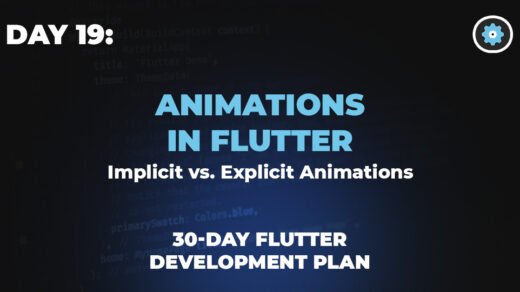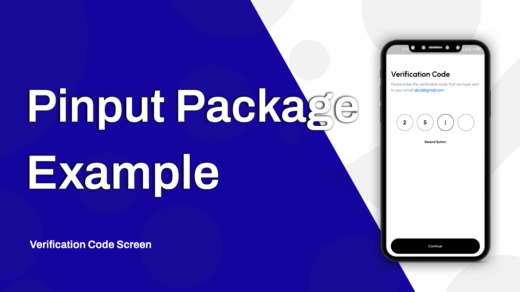Flutter User Interaction Guide
Make your apps respond to taps, text, and gestures!
Why User Interaction is Key
User interaction is what breathes life into an app. It’s how users navigate, input data, trigger actions, and control the app’s behavior. Without it, your app is just a static image. With interaction, it becomes a powerful, dynamic tool!
- **Navigate:** Move between different screens.
- **Input Data:** Type their name, email, search queries.
- **Trigger Actions:** Send a message, save an item, make a purchase.
- **Control the App:** Change settings, filter lists.
1. Buttons: The Most Common Interaction
Buttons are fundamental. In Flutter, you tell a button what to do using its `onPressed` property. Click the buttons below to see their actions logged.
ElevatedButton(
onPressed: () {
print('Elevated Button Tapped!');
},
child: Text('Click Me!'),
)
// ... similar for TextButton, OutlinedButton, FloatingActionButton
2. `GestureDetector`: Taps on Anything!
Use `GestureDetector` to make any widget respond to taps, long presses, and more. Tap the box below to see the message change.
Waiting for a tap…
GestureDetector(
onTap: () {
print('Image was tapped!');
},
child: Image.network('...'), // Or any other widget
)
3. `TextField`: Getting Text Input
The `TextField` widget allows users to type. The `onChanged` property lets you react to every keypress, and a `TextEditingController` helps you manage the text.
Live Text:
TextField(
controller: _myController,
decoration: InputDecoration(labelText: 'Enter text'),
onChanged: (text) {
print('Current input: $text');
},
onSubmitted: (text) {
print('Submitted: $text');
},
)
Handling State Changes: The Core of Interaction
User interaction typically involves updating “state” (data) in your app, which then causes the UI to redraw. Click the button to increment the counter and see `setState()` in action.
You have pushed the button this many times:
0class _MyCounterAppState extends State<MyCounterApp> {
int _counter = 0; // This is the 'state'
void _incrementCounter() {
setState(() { // Tell Flutter to rebuild the UI
_counter++; // Update the state variable
});
}
@override
Widget build(BuildContext context) {
return Column(
children: [
Text('You have pushed the button this many times:'),
Text('$_counter'), // Displays the state
ElevatedButton(onPressed: _incrementCounter, child: Text('Increment')),
],
);
}
}
Welcome to the final day of Week 1 in our Flutter journey! You’ve come a long way. We’ve covered Flutter’s basics, Dart’s fundamentals, and how to arrange widgets on the screen using layouts. Why User Interaction is Key
But what makes an app truly come alive? It’s when it responds to what the user does! Tapping a button, typing text, swiping a screen – these are all forms of user interaction. Today, we’ll learn how to make your Flutter apps interactive and dynamic.
Why User Interaction is Key
Imagine an app where nothing happens when you tap buttons or try to type. It would be pretty boring, right? User interaction is what allows users to:
- Navigate: Move between different screens.
- Input Data: Type their name, email, search queries.
- Trigger Actions: Send a message, save an item, make a purchase.
- Control the App: Change settings, filter lists.
Without interaction, your app is just a static picture. With it, it becomes a powerful tool!
1. Buttons: The Most Common Interaction
Buttons are everywhere in apps, and Flutter provides several ready-to-use button widgets. The most important thing about any button is its onPressed property. This is where you tell Flutter what to do when the button is tapped.
Here are some common button types:
ElevatedButton: A “raised” button with a shadow, indicating it’s a primary action.ElevatedButton( onPressed: () { // What happens when the button is pressed print('Elevated Button Tapped!'); }, child: Text('Click Me!'), )TextButton: A flat button, often used for less prominent actions or within dialogs.TextButton( onPressed: () { print('Text Button Tapped!'); }, child: Text('Learn More'), )OutlinedButton: A button with a thin border, good for secondary actions.OutlinedButton( onPressed: () { print('Outlined Button Tapped!'); }, child: Text('Cancel'), )FloatingActionButton: A circular button that “floats” above the UI, usually for the primary action on a screen (like adding a new item).FloatingActionButton( onPressed: () { print('Floating Action Button Tapped!'); }, child: Icon(Icons.add), )(Note:FloatingActionButtonis typically placed in thescaffoldMessengerKeyproperty of aScaffoldwidget.)
2. GestureDetector: Taps on Anything!
What if you want to make an Image tappable, or make a Container respond to a long press? That’s where GestureDetector comes in handy. It’s not a visual widget itself, but it “wraps” another widget and detects various gestures on it.
You can detect taps, double taps, long presses, drags, and more.
Example: Making an image tappable
GestureDetector(
onTap: () {
print('Image was tapped!');
},
child: Image.network('https://placehold.co/100x100/a8dadc/1d3557?text=TapMe'),
)
3. TextField: Getting Text Input
To let users type information (like a username, password, or search query), you use the TextField widget.
The most important property for TextField is onChanged (to react to every key press) or onSubmitted (to react when the user presses Enter/Done). However, to actually get the text typed, you usually use a TextEditingController.
Example: Simple text input
// In your StatefulWidget's State class:
TextEditingController _nameController = TextEditingController();
@override
void dispose() {
_nameController.dispose(); // Important: Clean up controller
super.dispose();
}
// In your build method:
TextField(
controller: _nameController, // Link the controller
decoration: InputDecoration(
labelText: 'Enter your name',
border: OutlineInputBorder(),
),
onChanged: (text) {
print('Current input: $text');
// You can update state here to display the text live
},
onSubmitted: (text) {
print('Submitted: $text');
// Usually trigger an action like saving or searching
},
)
TextEditingController: This is like a special helper that “listens” to theTextFieldand holds the current text. You can get the text using_nameController.text.dispose(): It’s very important to “dispose” of controllers when the widget is no longer needed to prevent memory leaks.
Handling State Changes: The Core of Interaction
Remember Stateful Widgets from Day 5? User interaction almost always involves changing some “state” (data) in your app, which then causes the UI to update.
When a user taps a button or types into a TextField, your code will typically:
- Update a variable (the “state”).
- Call
setState(() { ... });to tell Flutter: “Hey, something changed! Please redraw this widget and its children.”
Example: A simple counter app (revisited)
class MyCounterApp extends StatefulWidget {
@override
_MyCounterAppState createState() => _MyCounterAppState();
}
class _MyCounterAppState extends State<MyCounterApp> {
int _counter = 0; // This is the 'state' that will change
void _incrementCounter() {
setState(() { // Tell Flutter to rebuild the UI
_counter++; // Update the state variable
});
}
@override
Widget build(BuildContext context) {
return Scaffold(
appBar: AppBar(title: Text('My Counter App')),
body: Center(
child: Column(
mainAxisAlignment: MainAxisAlignment.center,
children: <Widget>[
Text('You have pushed the button this many times:'),
Text(
'$_counter', // Display the current state
style: Theme.of(context).textTheme.headlineMedium,
),
ElevatedButton(
onPressed: _incrementCounter, // Call our function when pressed
child: Text('Increment'),
),
],
),
),
);
}
}
In this example, when the ElevatedButton is pressed, _incrementCounter() is called. Inside it, _counter is updated, and setState() is called. This makes Flutter rebuild the _MyCounterAppState widget, and because _counter has a new value, the Text('$_counter') widget will display the updated number.
Conclusion
Congratulations! You’ve just learned the essentials of user interaction in Flutter. You now know how to use various button types, detect gestures on almost any widget, and get text input from users. Most importantly, you understand how these interactions tie back to updating the “state” of your Stateful Widgets to create dynamic and responsive UIs.
This completes Week 1 of our Flutter series! You now have a solid foundation in Flutter’s core concepts, Dart programming, layout building, and user interaction. Get ready to start building more complex and beautiful apps in Week 2!




